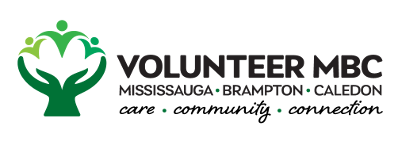
It kind of creeps up on you. During the first few ‘remote meetings’, last April (2020), after your company, government office, charity, school finally acknowledged the reality of the pandemic, then scrambled to take steps. Steps that included an abrupt transition to ‘virtual’, online communication.
Some of us were familiar, even fairly comfortable, having used Skype to interact with, say, distant relatives, a long distance ‘love interest’, yet for many people, due to sudden ‘social distancing’ imposed by COVID-19, using Internet visual communication platforms became much more than a novelty, quickly graduating to a necessity.
The initial exploration and experience by most who need to ‘meet virtually’ online during the business week (that may go beyond 5, even 6, days), has given way to inexplicable feelings of primarily mental fatigue, symptoms that in short order have been accepted by the health care profession and human resources experts as both real and troubling. Naturally, particularly in the workplace, in the office, factory, and from the ‘home office’, the means by which we can cope with and ideally offset and prevent ‘virtual fatigue’ are being urgently explored, with early attempts at research.
The answer? Not yet, but theories are out there, to be sure. In November, 2020, the Psychiatric Times published a preliminary summary of a study that suggested that seeing each other ‘on video’ rather than ‘in person’ compromises our reward system: “More active social connection is associated with more perceived reward, which in turn affects the very neurological pathways modulating alertness versus fatigue.” When we add the need for increased ‘multi-tasking’ during video conferencing, with the possibility of distractions (within a family home, use of other devices, technical issues, and even ‘clockwatching’), while grounded in one spot, the recipe for mental (and physical) fatigue definitely is there.
In other words, the underlying reason appears to be that we really do miss each other, in a variety of roles and settings, and it’s not only frustrating, but also our health (including energy) is being adversely affected in ways that we are only beginning to understand.
What, then, is to be done? We may have to wait longer than we wish for a vaccine, but this issue of ‘virtual fatigue’ can be addressed, now, even if questions remain. Perhaps a short list of helpful strategies will assist in management of, even offset or prevent, fatigue:
1. Get comfortable with the ‘system’ and your device
Settle your mind as to how you use Microsoft Teams, Zoom, etc. Learn the ‘basics’. One less ‘task’ consciously to have to contend with = more room to focus;
2. Your ‘home office’ is your ‘OFFICE’
If you can, separate and creative a physical space for your business, then use it exclusively for business (minimize distractions of all kinds = better focus = less energy leakage = less fatigue = more efficient/effective use of time/energy). Relocate your portable laptop for leisure/entertainment use.
3. A ‘virtual meeting’ should be time well spent
Convenors will help your management through regular scheduling of short meetings that are kept short, thanks to an agenda. STAY AWAY from leaving other (personal) tabs (windows) open on your device, and turn off other devices, UNLESS these are needed for your meeting. Be ‘in the moment’ in any meeting (or call). Set up your office so that you can easily take notes, if you need to;
4. IF your meeting requires a ‘SHARED SCREEN’, use ‘visual’; IF you really need to LISTEN, with careful discussion, use ‘audio’ (no video)
It’s nice to gaze upon a colleague’s head and shoulders, and see a smile, but staring at the screen can be distracting, especially when you absolutely need to listen closely. USE the principal speaker/convenor/moderator mode, given that looking at 22 ‘screens’ jumbled together can be distracting and exhausting. And, if you can’t hear someone, SAY SO! RIGHT AWAY! Repeating what’s been said, especially with a large group in attendance, can be both tiring and frustrating, plus prolong a meeting. AVOID the scenario where you think that you have missed a critical point, as worry over that will create needless anxiety and fatigue;
5. Don’t get TOO SETTLED IN!
Avoid sitting for long periods. Make sure that your chair and posture to your device are well-positioned (you’ll THANK YOURSELF!) If need be, try the ‘POMODORO’ TECHNIQUE (20-20-20 task/activity split to head off strain/fatigue). Minimize eye strain by taking a break to simply look at distant scene/objects for a few minutes. Stretch … walk around … go outside. A light snack may help, coffee, too, but do not depend on the latter;
6. TRY TO SPACE YOUR MEETINGS > IMPROVE YOUR MEETINGS
It’s sometimes difficult, yet preferable. Half-hour between, if you can. And at least monthly, join your colleagues to schedule a meeting to review your meetings: a ‘forum’ to raise concerns and suggest/discuss making these better experiences for all (for those meetings, see if you can appoint a tech-savvy colleague or team who will keep current on the latest developments re. set up and optimal use of the apps available to you, including the latest about minimizing ‘virtual fatigue’);
And ‘software-as-a-service’ (SaaS) app providers (Microsoft Teams, Zoom, Google Meet, GoToMeeting, etc.) are constantly improving features and ease-of-use, because they realize, as we all should, that ‘virtual meetings’ online are here to stay.
Yes, another consideration in reference to the ‘new normal’, after the Pandemic has eased. On the other hand, just imagine if ‘remote meetings’ (or the Internet) weren’t in existence during COVID-19. Something to think about.
